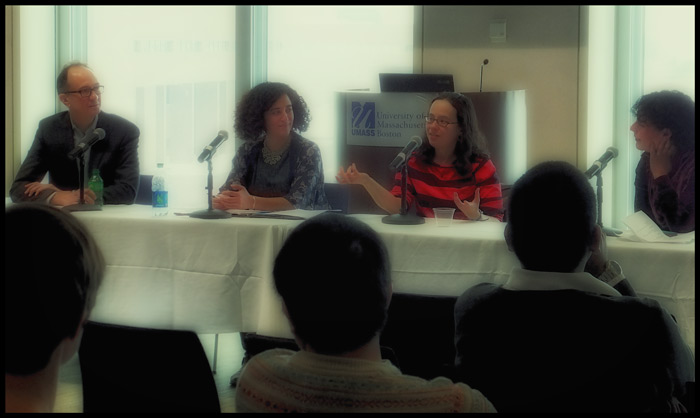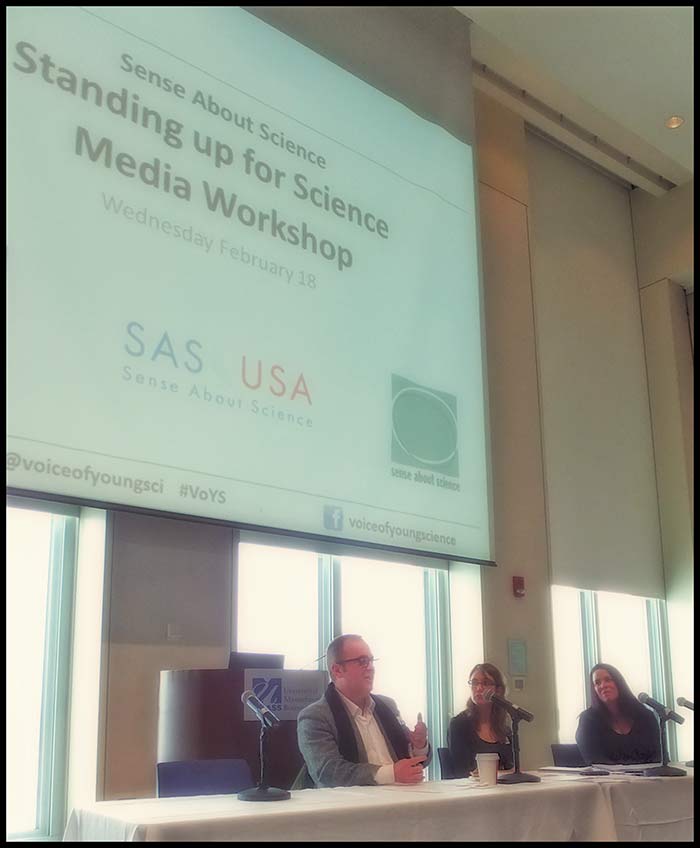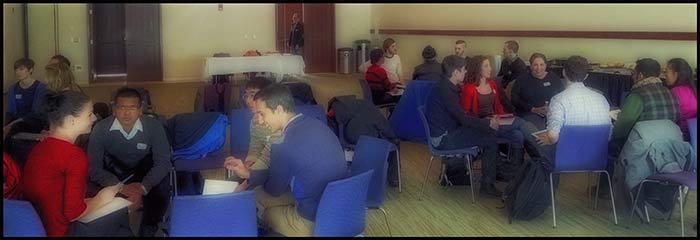Speaking up for Science in Boston

The snowy and frigid temperatures (and the long commutes) didn’t keep people away from our Standing Up for Science media workshop at University of Massachusetts, Boston on February 18. With more over 25 graduate students, post-doctoral fellows and early career scientists specializing in various branches of science from astronomy to neuroscience to medicine, we embarked on a full day of discussions on why scientists need to engage with the public and how they can accomplish this.
On our first panel were Willy Lensch, Executive Director of Harvard University’s Department of Stem Cell and Regenerative Biology, and Robyn Hannigan founding dean of the School for the Environment at UMass Boston; both spoke very candidly about their own experiences in engaging with the public.
Dr. Lensch said that in his career as a stem cell scientist he has spoken on over 200 panels (including conferences and Congressional hearings), and though he enjoys explaining why stem cell research is important, it has had a professional cost: he doesn’t have his own research lab due to the administrative and outreach aspects of his role. Dr. Hannigan said she felt she had a responsibility, on some level, to engage with the public given the importance of her paleo-geology and climate science work to climate change.
Both scientists stressed a few key points for participants: first, be brave and don’t ever think it is not your role to participate in policy discussions about science and society; second, don’t be afraid to ask any journalist who calls you up to explain what their story is about or why they are writing their story; third, make yourself approachable and take the time to explain scientific concepts and processes to those willing to listen; and lastly, think about your words, how you are communicating and who the audience is.
With these words we paused for lunch and group discussions. The audience split into four groups to talk about what journalists do well and how they could improve. For instance, one group noted that the media is good at “offering alternatives and unique perspectives on science,” while another group noted that unfortunately sometimes media outlets, “sensationalize and overstate results” of studies.
These discussions lead into our second session of the day, with three seasoned journalists who spoke about how they worked and what they are looking for when they are writing about science. Carolyn Johnson, science reporter for Boston Globe, gave a great overview of what a day in the life of journalist looks like—from deadlines to interviews to how many stories (in all topics of science) a reporter needs to cover, especially when, like Johnson, you’re the only science reporter at the paper.
Carey Goldberg, co-host of the WBUR’s CommonHealth blog and reporter on health and science, talked about how terminology and concepts for on-air broadcast need to be simple; people are rarely “just listening” to the radio, so she needs to make sure the science is delivered in easily understandable terms. She appreciates when scientists give her metaphors or a great story to explain the science (journalism is about story telling, Goldberg said, and so she’s looking for the story). Last on our panel was Wade Roush, acting director of the Knight Science Journalism fellowship program at MIT, who pointed out that there isn’t one media: there is the McDonald’s of the media and the Four Season of the media, and how they cover news, specifically science news, differs.
Finally, David Cameron, Director of Science Communications at Harvard Medical School, and Lauren Robertson and Mihai Diulescu, from the Ask for Evidence (A4E) campaign, spoke about the “nuts and bolts” of science communication. Cameron spoke about the media training opportunities available at university press offices and how he appreciates hearing from scientists about their work early on in a paper’s acceptance process. Robertson and Dinulescu spoke about the A4E campaign and how it has been applied at Emerson; their hope is to empower more people (scientists and general public) to take part—so read more about it here and take part!
Sadly, our day ended a bit short as the fire alarm in the building went off before we could have final thoughts. But the cliffhanger inspired some great conversations half-an-hour later in a pub not too far away from the UMass Boston campus (though a few snow hills had to be traversed to reach our destination)!
We hope to organize more of these workshops for young scientists in 2015. If you would like to bring our workshop to your university or society, please let us know, as we are always looking for enthusiastic partners!


